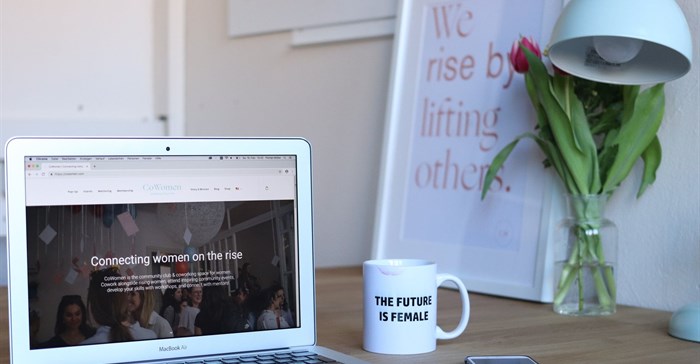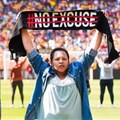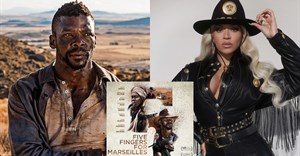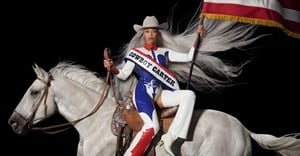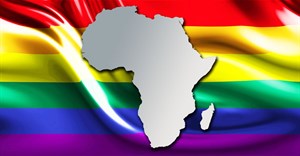Trending




 Sabre EMEA 2024 Awards: Razor PR, Retroviral top SA agenciesDanette Breitenbach
Sabre EMEA 2024 Awards: Razor PR, Retroviral top SA agenciesDanette Breitenbach
Elections 2024
Jobs
- Printing Sales Account Executive Johannesburg
- Sales Executive/Design and Display Industry Johannesburg
- Designer Cape Town
- Junior Orders Processing Clerk (Junior Estimator) Durban
- Brand Ambassador Nelspruit
Preparing your brand for the female consumer of 2030
At the same time as their influence in society and the commercial world is expanding, women’s financial power is growing, too. Women are expected to control 75% of discretionary spending around the world by 2028, according to Boston Consulting. McKinsey predicts that women globally could gain 20% more jobs by 2030.
Women are also gaining more autonomy in terms of their bodies. There is a corresponding trend towards singledom and self-care that will affect nearly all industries in powerful and subtle ways. Women are prioritising their careers, taking care of their health and breaking all the gender norms to create the new normal which is no normal.
The single lifestyle is creating an increased need for single servings and convenient services. But don’t imagine that this means the single woman is selfish or solitary. She may not be as quick to marry and bear children, but her need to connect and nurture remains strong. There is a rise in sharing spaces for co-living and co-working, as well as an increased interest in pets and plants.
Increased longevity means women, young and old, are looking after their bodies to ensure they live not just a long life, but a happy and healthy one too. Digital technology and artificial intelligence (AI) will be seen to play a growing role in supporting physical and mental health with an influx of apps and innovations in this sector:
- Nestle Japan is using AI, social media, and home-testing DNA kits to create personalised diets for consumers and help predict what diseases they could be at risk for.
- L’Oréal’s Technology Incubator arm is currently investing heavily in research in hormonal and gut health, and also skin pH levels.
- Somnox is a robot that helps users fall asleep by regulating breathing.
Having first-hand experience of being discriminated against and marginalised, the woman of 2030 is inclusive and will not be judged by age, beauty, race, disability or gender and she expects brands to do the same. While the women of 2030 will not be stereotyped, research from Wunderman Thompson identifies five emerging female archetypes for the modern marketer to consider:
The liberated woman
The liberated woman’s mission is to correct societal wrongs and upend biases. She is an outspoken and independent figure with firm values and global views. Climate change activist Greta Thunberg embodies this archetype. Brands that take a stand on social, political and environmental issues will gain the liberated woman’s trust, provided they do so authentically and transparently.
Mompreneur
Mompreneurs focus on the benefits of momming while full-time-jobbing. They are unapologetic about working hard and getting real about the challenges of motherhood. Ambitious and financially independent, they embrace the good and bad of motherhood.
Brands would do well to understand that the mompreneur has a more collaborative approach to family life. Her children will strongly influence her purchase decisions but gone are the days of bunnies on bags. Today’s moms want to be taken seriously and are replacing kid-centric products with adult design sensibilities.
The innovationist
Women are strongly represented in the next generation of inventors—experimenting, creating and building to solve gaps in the market. They are bold risk-takers and inventors. Brands that provide opportunities to collaborate and co-create will see their stars rise along with these innovators.
Beyond binary
Rejecting outdated and sexist biases in everything from dress codes to dialogue, many young female leaders are distilling “feminine” into a biological classifier rather than a prescriptive behaviour. An example of this self-empowered, nonconformist humanist is the actor and model, Ruby Rose.
Brands that actively breakdown stereotypes, stand for inclusivity and embrace gender-neutral design will have strong appeal to this archetype:
- The Tailory which specialises in “ungendered” clothing was started by Shao Yang who felt she could not find a place for herself in the fashion industry.
- Thinx’s MENstruation ad considers a world where men and women have periods. The tag line is “if we all had them, maybe we’d be more comfortable with them”. The brand has also featured ads with a transgender model.
Ageless woman
Women in their 50s, 60s and 70s are defying expectations and upending the status quo. They refuse to be overlooked and celebrate life. Brands that normalise ageing and that are accommodating and supportive of women’s changing needs as they grow older will stand the test of time:
- Get In The Groove is a lifestyle site for “age-defying women”.
- Speax by Thinx create underwear for bladder leak protection.
- Pepper & Wits by P&G offer products for women experiencing painful vaginal dryness, hot flashes, brain fog, sleep problems, night sweats and other symptoms.
Adapting your marketing strategy to a world in flux
The woman of 2030 cares – about herself, her community and her environment. Brands should look at ways to support her new lifestyle by providing convenient services, collaboration opportunities and experiential spaces for connecting with others. She will choose and shun brands based on their inclusivity and their contribution to the greater good.
Brands that lead with values-based marketing, avoid stereotyping and actively communicate what they are doing to address social, political and environmental issues will gain her trust and loyalty:
- The Urban Village concept is a new community format structured around the idea that cities should be more communal, more affordable and more sustainable. The design combines private living with shared spaces such as communal kitchen and dining areas in an effort to foster social connection.
- WeLive, the co-living arm of We Company (parent to WeWork), has its sights set on the global market, with plans to launch in India.
- Beyoncé asked fans to share videos of themselves dancing and consequently launched #BeforeILetGoChallenge sharing her favourite ones on Instagram story.
- Starbucks in China has committed to supporting local farmers and is working towards better health and education services for children in 30 villages across the country.
- Haeckels’ “biocontributing” packaging is crafted from mycelium with an outer wrapper made of seed paper. When buried and degraded, the wildflower seeds are “contributed” to the land.
Physicality, passion, agency, sweat, and grit are the new hallmarks of femininity in our rapidly changing world and leading brands should be taking note of how women’s position in the world and perceptions of themselves are changing if they want to get ahead of this massive social shift. The woman of 2030 is taking a stand, and she wants the brands she buys from to do the same.



